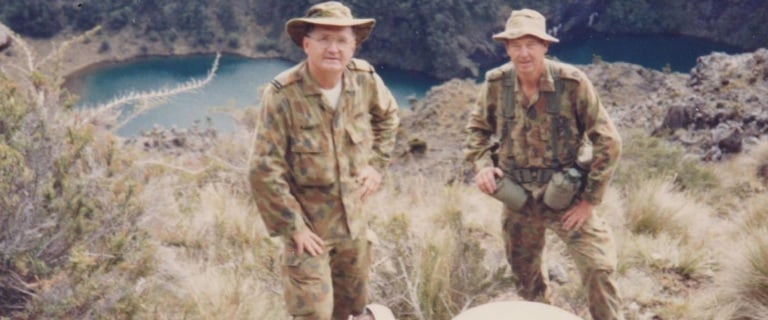Ex-RAAF Reservists solve 40-year-old plane wreck mystery

Bolton Clarke Rowes Bay Retirement Village resident Bruce has always had a special interest in military aircrafts. As an ex-reservist in the Royal Australian Air Force (RAAF) and a Townsville local, he has spent a lifetime researching and studying crash sites in the local area.
Bruce’s friend Pat was the curator of the Townsville RAAF Base Museum during the 1980’s and 1990’s. Together, they have spent decades working on the 40 known crash sites in Townsville and North Queensland, with one in particular remaining a mystery.
In December 1943, during World War II, a USAAF Lockheed Lightning P-38J Fighter aircraft crashed in the Mount Elliot National Park whilst on a test flight out of the US Air Depot in Townsville.
Using detail from Aviation Archaeological Investigation and Research (AAIR), Bruce and Pat have spent decades piecing together the story of the crash that had happened in their own backyard – but despite the crash being so close, for 40 years they have never been able to find it.
“We know that it was a brand-new plane which had been shipped into Townsville, assembled and sent out on a test flight from the US Air Depot in Townsville before it was planned to be flown up to New Guinea.” Bruce explains.
“By all accounts, on the test flight, there was a serious fuel distribution problem and the pilot decided to abandon the stricken machine. He bailed out and managed to parachute safely to the ground, which took him about 20 minutes. During that time, he was able to see the aircraft crash.
“Despite that, it’s location has always remained a mystery. The only people known to climb to the crash area were local teenagers during the late 1940’s and early 1950’s and the wreckage was never found.
“We have done lots of searching in recent times, and with the advent of GPS systems and Google Earth, the search has taken a great step forward towards the location of the aircraft.”
The mystery began to unravel this year when Bruce and Pat were able to pinpoint a possible location for the wreckage based on some old interviews.
Together with the help of a local bush walking group they decided to do some flights over the potential location with a drone, which has allowed them to get a better understanding of where the plane is located.
“The area is a very difficult site to access,” Bruce says.
“Now 40 years on it looks as though the mystery may be resolved. All that remains now is to physically access the site and confirm the wreckage is that of the P-38J Lockheed Lightning.”
After 40 years, the site is overgrown and has been damaged by natural disasters such as bushfires. On a recent attempt to physically hike to the site, Bruce found it difficult to access on foot. The group plans to revisit their access attempts in the cooler months of next year.
More from Rowes Bay

